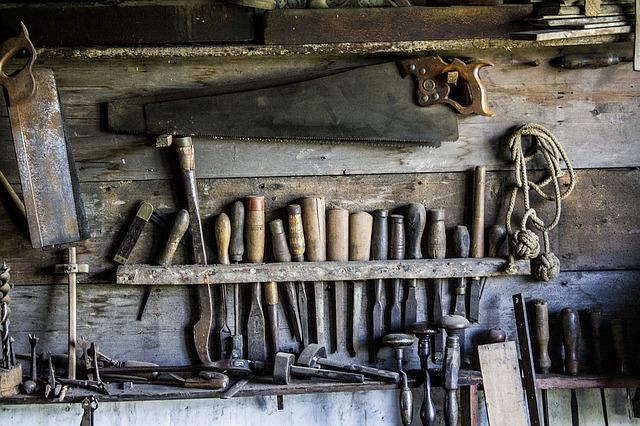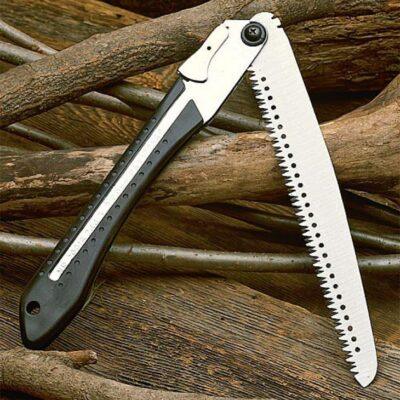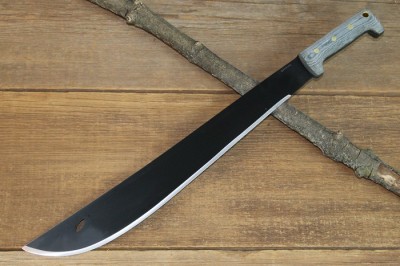It seems that everyone has their ideas about survival kits and must-have tools. I’ve probably read through at least 100 different lists in the last few years, and in reality, what I find are the same ideas being reiterated over and over again. The new ideas I find in those lists are all too often impractical — either too heavy or too bulky to carry.
With that criteria in mind, I’m always going back and rethinking my kit, looking to see if there is something I can improve. While a lot of time that doesn’t accomplish much more than assure me that I’m doing alright, at times I find something else that will serve me better. Recently, I’ve made a few changes in my tools, seeking to have a set that will serve me better if I ever find myself bugging out and having to survive on what’s in that bag.
The tools in your survival kit will probably be used for two main purposes: building shelter and gathering firewood. Both of those tasks require a lot of wood cutting. So, one of the biggest needs for my tools is to be able to cut a lot of wood, quickly and easily. If the tools can’t do that, they are essentially worthless.
With that in mind, let’s take a look at some common categories of tools and see how well they will work in a true survival situation.
1. Knife
Everyone agrees that the knife is the most important tool you can carry for survival. I’m not going to argue that. In fact, I just added a second sheathe knife to my bug-out bag. My basic bug-out plan calls for me to have one on my belt. But what happens if that one gets lost? The answer most people go with is to have a folding knife as a backup. I have that, too, as a folding knife is part of my everyday carry (EDC). But I really wouldn’t want to depend on a folding knife in a survival situation, hence the second sheathe knife.
Get The Essential Secrets Of The Most Savvy Survivalists In The World!
I’ve had a number of different knives through the years, which has led me to appreciate what I feel makes a good survival knife. First of all, it has to be quality. More than anything, that means being made of quality steel, with a full tang. Good steel will stay sharper longer, increasing the knife’s utility and reducing maintenance.
As for knife design, I’ve settled on a length, from 3 1/2 inches to 5 1/2 inches. My main knife is the longer length and my backup is the shorter. For survival tasks, anything longer is too hard to work with and anything shorter leaves you struggling to get things done. Avoid a sharply pointed knife, like a severe clip point or dagger, as the point will break easily. But be sure to have a point, as they can be useful. A drop point is just about ideal. Tonto points leave you without the ability to use the knife as an awl.
2. Saw
If there is any one area where I think most of us have missed it in our survival tools, it’s with the saw. Most people carry a wire saw. Some have replaced that with the pull strap chainsaw. Have you ever really tried cutting a tree branch with a wire saw? Forget it. Besides, in a true survival situation, the wire saw is probably going to break. Forget any saw which is part of a knife blade or multi-tool, too. They are just too short.
I was tempted to add a bow saw to my bug-out bag for a while, although it’s really too big. But if you want to cut tree branches, that’s about the best manual saw for it. It’s definitely faster than anything else you can find, and cuts with minimal effort.
But I found something almost as good. That’s the pruning saw. No, I’m not talking about the type that are on the end of a pole, but rather a folding pruning saw. Looking much like an oversize pocket knife, these will have a saw blade from 8 to 12 inches long and are razor sharp. Lightweight, they’ll still cut through a tree branch in a few minutes of work, rather than an exhausting half hour.
One other option is to combine your need for a saw with a machete. Some manufacturers make machetes with a saw blade on the back side. I have one of these, and while it doesn’t cut as good as my bow saw, it’s almost as good as the folding pruning saw. What it lacks in tooth design and sharpness, it makes up for by being longer.
3. Machete
Since we’re on the subject of machetes, let’s talk about them. Maybe it’s the time I’ve spent in Mexico, but I’ve grown to really appreciate the general utility of a machete. Not only are they about the only tool you can use to clear underbrush and blaze a trail, they’re excellent for cutting down saplings and cutting off small tree branches. Properly sharpened and used, they are better for cutting small branches than a hatchet.
New Solar Oven Is So Fast It’s Been Dubbed “Mother Nature’s Microwave”
The machete also makes an excellent short-range weapon, should you find yourself in a melee and need something better than a knife. Using one against a knife-wielding attacker definitely gives you the advantage of reach, all but ensuring that you’ll win that confrontation.
All this and the machete is actually a rather light tool. It’s much lighter than a quality hatchet will be and even lighter than most tomahawks. Considering the importance of keeping the weight of everything you carry down to a minimum, the few ounces a machete saves is worth it.
4. Hatchet/tomahawk/machete
Somehow, the tomahawk has become a very popular option within the preparedness community. Granted, it’s a cool weapon, much cooler than a hatchet. Yes, the hatchet can be used as a melee weapon, and, yes, it can be thrown. But if it came down to that point, I wouldn’t want to be throwing my tomahawk and perhaps giving a weapon to an enemy.
Many think of a tomahawk as a hatchet with additional benefits. But a tomahawk can’t do everything a hatchet can. More than anything, it can’t be used as a hammer, something that any good hatchet does very well. And while you can cut wood with it, it doesn’t cut wood as well as a saw or a machete.
Actually, although I still have a hatchet strapped to the side of my bug-out bag, it’s lost a lot of its prestige to the machete. The main reason I still carry it is that the one I have has a hammer head and a pry bar built into it. Both of those can be useful tools to carry. While a rock can do service as a hammer, there’s really nothing else I’m carrying that can do double duty as a pry bar, without breaking it.
5. Shovel
When I was in the Army, we carried a shovel (more properly called an “entrenching tool”) as part of our field gear. The main purpose of that was for digging foxholes. Considering the effectiveness of foxholes in warfare, that made sense. But do we really need one for survival?
Are You Prepared For Long-Term Blackout? Get Backup Electricity Today!
There are a few places where a shovel is useful in survival, such as digging a latrine, making a fire pit and digging a trench around your tent to divert water. While those tasks could be done with a knife or other tool, that would probably dull the tool — not something you want.
Thus, a shovel is part of my kit. What I’ve found is that the longer the shovel, the better. When it comes time to dig, a handle that’s a few inches longer gives you more leverage, making the job easier. Look for length, rather than the added whistles and bells that some companies try to include. You don’t need your shovel to double as a saw or a compass; they won’t do that well.
6. Multi-tool
Ever since the multi-tool hit the market, they’ve been included in survival kits and bug-out bags. Perhaps that hearkens back to the days of the Swiss Army Knife or the multi-purpose knives that we carried as Boy Scouts. I’m not sure.
But there’s a big difference between today’s multi-tool and those knives of the past. That difference is that the multi-tool is intended to be a compact tool kit, with screwdrivers and pliers as the main focus. Yeah, they usually have a saw blade and a knife blade as well, but not some of the more useful survival blades, like an awl.
The thing is, you’re not likely to need to strip down a piece of equipment and repair it when in the middle of the wilderness. You’re more likely to need to make clothing out of a hide that you tan yourself. So, why are you carrying that multi-tool along? What are you going to use it for?
What do you think? Do you agree or disagree? Share your thoughts in the section below:
Learn How To ‘Live Off The Land’ With Just Your Gun. Read More Here.
 Off The Grid News Better Ideas For Off The Grid Living
Off The Grid News Better Ideas For Off The Grid Living






